
Steel, painted black
22'8" x 24' x 46'
Edition 1/3
The Detroit Institute of Arts, MI

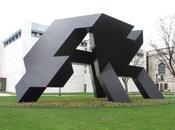
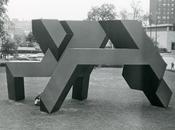
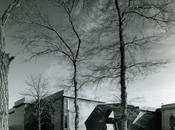
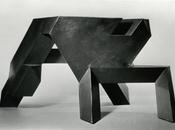
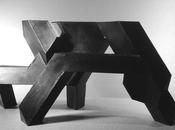
“Actually, the title happened in a Joycean way long after the sculpture was designed and does not mean I was trying to illustrate an insect. A funnel-like form on the model suggests the hoppers used to load a coil on the railroad cars. Once I had the word ‘hopper’ in mind I turned to Joyce’s parable for the rest. It comes from the central passage in Finnegan’s Wake called the “onet” — corresponding to “ant” — and the “gracehoper.” The onet represents the spatial orientation of the classical world, the Greek world. The gracehoper represents the modern world, of, say, Bergson and Einstein, the world of dynamics rather than statics. There was some sort of feud, or at least some contention, I believe, between Joyce and the writer Wyndham Lewis. Lewis had written a book called Time and Western Man. What Lewis did there was to attack time as opposed to space, space being the organizing factor of the practical world. By the way, it’s been said, and I believe possibly acknowledged, that the idea for Ulysses came from a story by Lewis called "Cattleman’s Spring Mate." The title meant the First World War, that was his “spring mate!” But to get back to that chapter in Finnegan’s Wake, the onet refers to the world of space just because the ant was the spatial organizer. Joyce ended the conceit with one of the most comical references to space and time that has ever existed. He said: “Your space is enormous, your extension sublime, but Holy Saint Martin, why can’t you keep time?”
“I think of the Gracehoper as intimate rather than monumental. People have some sensuous connection with this work. They can move around it, walk under it, go through it.”
-Tony Smith on Gracehoper